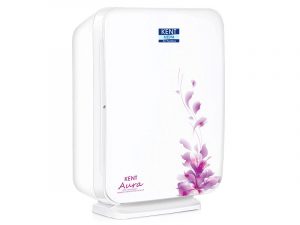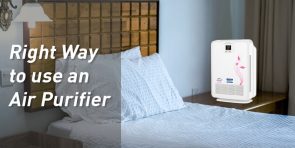As the Air Quality Deteriorates, Here’s a List of the Cities with the Worst Air Quality in Winter
Come winter and every year India faces the problem of choking air pollution. While Delhi is always in the news for its pollution problems, there are a lot of other cities as well that face the same problem in winter. The decreasing air quality mainly affects kids and senior citizens as they don’t have a strong immune system to fight pollution. This deteriorating air quality also has an impact on the quality of indoor air. So, in this blog, we discuss in detail the list of cities with the worst air quality in winter. Read on.
The List of Most Polluted Cities in India
Not just Delhi, but a lot of cities in India face poor air quality. WHO found that 13 of the 20 cities with the worst air quality are in India in 2018. In addition to Delhi, many of the major cities have extremely bad air quality. However, southern states such as Hyderabad, Chennai, and Mumbai are in the safe zone when it comes to air quality throughout the year. Some of the most polluted cities in India are listed below:
| State | AQI |
Condition |
| Hisar | 476 | Severe |
| Bhiwani | 471 | Severe |
| Noida | 470 | Severe |
| Ghaziabad | 467 | Severe |
| Manesar | 463 | Severe |
| Greater Noida | 462 | Severe |
| Delhi | 456 | Severe |
| Gurugram | 447 | Severe |
| Baghpat | 446 | Severe |
Source- Weather.com (As on November 13, 2019)
Despite the excessive level of smog, Delhi was not listed among the most polluted cities in India. There are only four cities in India with ‘good’ air quality out of which two were in Kerala. Eloor, a suburb in Kochi, recorded the best air quality followed by Thane, Thiruvananthapuram, and Kota.
Reasons for Increasing Pollution in Winter
Delhi and most of the regions in Norther India face severe fog and pollution every winter, which disrupts trains and flights. Fog is basically water droplets or ice crystals in the air that are very close to the surface. However, the question is why does North India face a similar situation every year. According to meteorologists, there are four reasons behind this problem-
- Low Winds
- Low Temperature
- Availability of Moisture
- Availability of Pollution Particles
A study by scientists of the Indian Institute of Tropical Meteorology and the Indian Meteorological Department published in 2017 suggested that the intensity of fog increased during winter in the past decade due to pollution. Mass concentration of Black Carbon (BC), which is a component of particulate matter, increased before and during the initial phase of the dense fog period. The study found that a decrease in temperature and an increase in relative humidity (RH) are important factors that lead to dense fog in urban areas.
Does it Affect Indoor Air Quality?
The deteriorating air quality also has a negative impact on indoor air quality. As most homes are not well-insulated, the polluted air can easily penetrate your home and lead to indoor air pollution. In addition, the presence of dust mites, allergens, dust, pet hair, and dander present in your home also deteriorate the air quality. The only way to deal with deteriorating air quality is by installing an air purifier, which easily catches and traps indoor air pollutants of all sizes.
Which Air Purifier is the Best?

Though there are a lot of air purifiers available on the market, HEPA air purifiers are the best when it comes to purifying indoor air. HEPA air purifiers catch and trap indoor air pollutants, which are as small as 0.3 microns. The air purifiers use a multi-stage purification process that removes different types of pollutants and bad odors to make your home safe and pollutant-free. If you have kids or senior citizens at home, installing a HEPA air purifier is a must. To find out more about HEPA air purifiers, click here





